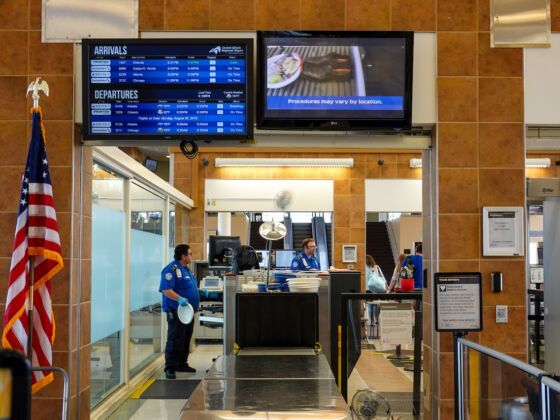If I have my hair in a protective style like box braids, after going through an airport body scanner, I can expect a pat-down. I have a very distinct memory of one instance at airport security when an officer looked down at my passport about three times before finally allowing me to go through with the comment, “Just make sure to get a new passport photo.” I had taken the photo only a month prior. The only difference? At the airport, my hair was braided up.


TSA Technology Singles Out Marginalized Communities — and It Needs to End
TSA works directly with the public every single day. As travel is picking back up, yesterday saw some 2,022,858 individuals pass through security checkpoints in the US. And yet, I can’t think of any reason why someone would enjoy the screening process. Not only is there the inconvenience of getting to the airport two to three hours early to wait in a long and slow-moving line, but it can also be confusing, stressful, and anxiety-inducing.
But for some people, TSA is more than just a nuisance. For many transgender folks, Black people, and other people of color, going through TSA can result in embarrassment, trauma, and violations.
Systems of oppression are rooted in the history of TSA procedures. According to the Department of Homeland Security, “the Transportation Security Administration (TSA) was created in the wake of 9/11 to strengthen the security of the nation’s transportation systems while ensuring the freedom of movement for people and commerce.”
In 2007, six years after the TSA’s inception, the Pew Research Center conducted a study and reported that 18 percent of Muslim Americans said they had been singled out by airport security for inspection or questioning in the past year, with 30 percent believing it was because they were perceived as being Muslim.
The problem exacerbated itself once TSA replaced metal detectors with full-body scanners after Umar Farouk Abdulmutallab boarded a flight on Christmas Day 2009 from Amsterdam to Detroit with plastic explosives inside his pants. According to a report published by ProPublica, TSA brought in the updated technology to check for foreign objects. However, it’s still unable to scan through thicker items, like braids or underneath hijabs.
Current TSA procedures also single out transgender folks. As of now, the process requires the scanner operator to select a gender identifier for the individual. A pink button is pressed for females and blue for males. The TSA states gender is determined by “how you present yourself” at the airport and to the officer that operates the body scanner.
In 2019, another ProPublica investigation found that transgender travelers are often subjected to “pat-downs” of genitals, misgendering, pressure to expose private body parts, and invasive screenings, sometimes in private rooms. The report also found that although transgender people make up less than one percent of the population in the US, five percent of online complaints against the TSA between January 2016 to April 2018 came from transgender folks.
In March, Rosalynne Montoya, a model, actor, and public speaker, spoke of their personal experience going through airport security.
@rosalynnemontoya
“I don’t feel safe. I don’t expect TSA agents to have my best interests at heart,” Montoya said. “I’ve been sexually assaulted, groped, grabbed, forced to remove my clothing [at TSA checkpoints]. I remember those times every time I go through TSA,” she later told The Washington Post.
Unfortunately, stories like Montoya’s are not uncommon. Running someone through the scanner “based on how you present yourself” at the discretion of the TSA agent is a flawed system. And although there have been calls, and lawsuits, advocating for change, not much progress has been made. TSA technology and procedures single out travelers from marginalized communities — and it needs to end.